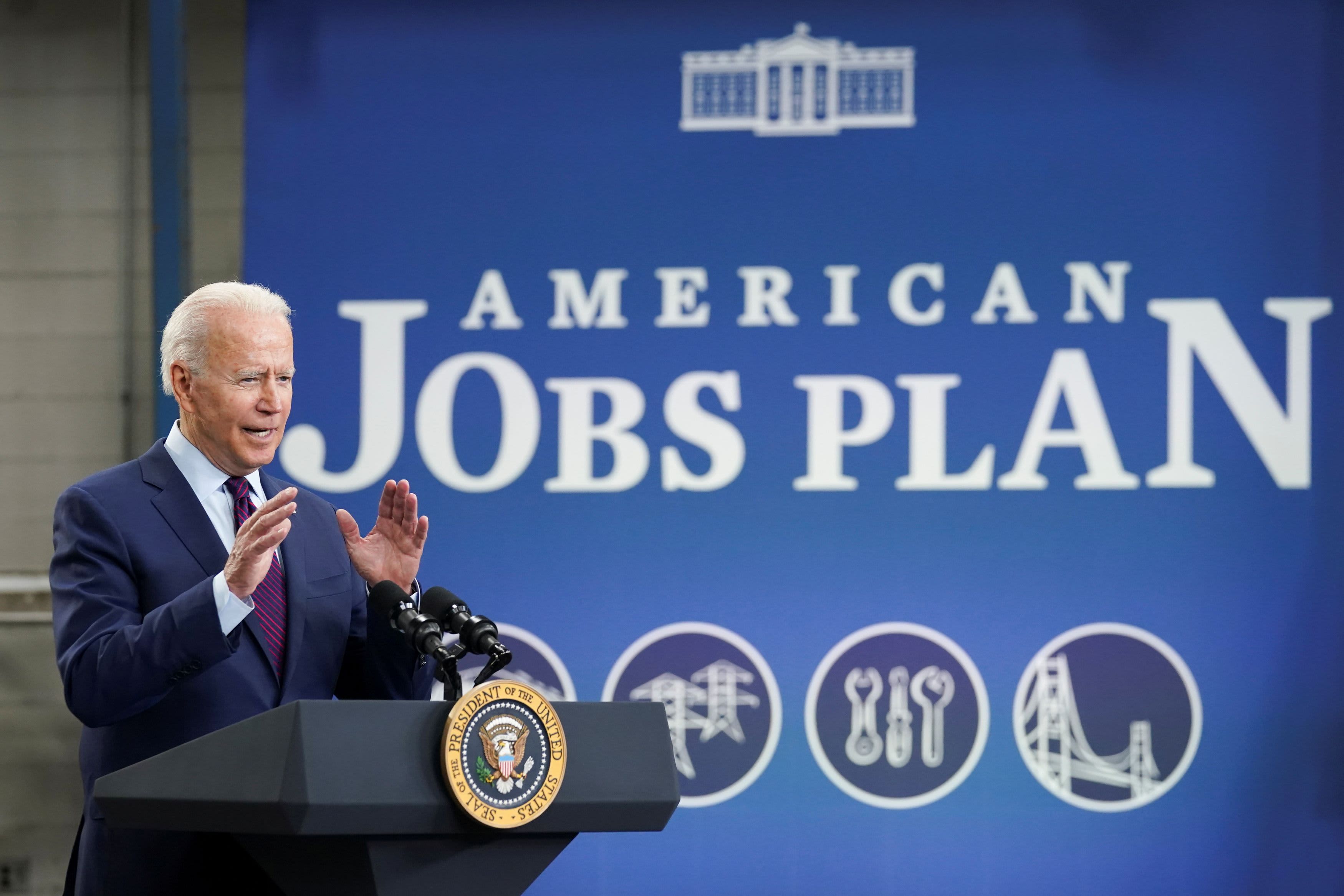A bipartisan infrastructure deal reached by President Joe Biden and a group of senators would not only add to economic growth, but also lower the national debt, according to a new study from the University of Pennsylvania’s Wharton School.
Researchers at the Wharton School said the additional $579 billion in new infrastructure spending would increase domestic output by 0.1% and decrease the U.S. debt by 0.9% by 2050.
“Over time, as the new spending declines, IRS enforcement continues, and revenue grows from higher output, the government debt declines relative to baseline by 0.4 percent and 0.9 percent in 2040 and 2050 respectively,” the Wharton team wrote.
Speaking to CNBC on Tuesday, Wharton senior economist Jon Huntley said improvements to public capital (roads, bridges and other physical infrastructure) makes private capital (trucks and trains hauling goods for companies) more productive over time.
Fewer potholes and rail service interruptions, when summed over years, increase U.S. economic activity and encourage further investment from the private sector.
The projected uptick to GDP and concurrent reduction to the national debt, though fairly modest, are likely welcome news to the Democrats and Republicans that brokered the agreement with the White House.
The entire package endorsed by the bipartisan group of senators and the Biden administration authorizes $1.2 trillion of spending over the next five years. The incremental $579 billion includes more than $300 billion for transportation projects, while $266 billion would be allocated to digital, disaster, environmental and energy infrastructure investments.
Biden is in the middle of a road show to tout the plan, and on Tuesday told crowds in Wisconsin that it’s “going to make the world a difference for families” in the Badger State.
The deal will “make sure [high speed broadband] is available in every American home, including for the 35% of rural families who currently go without it,” he added. The president is expected to travel to Michigan this weekend to offer further praise for the agreement.
Still, Biden’s cross-country mission to generate support for the measure highlights the fragility of even a bipartisan effort to repair the nation’s transportation infrastructure. The president himself nearly doomed the agreement last week, when he said he would veto the infrastructure bill if it wasn’t passed in tandem with a larger bill backed exclusively by Democrats.
He later backed away from that pledge when it became clear that the comments had upset Republicans.
The latest Wharton study comes months after the school analyzed the Biden administration’s first infrastructure proposal, known as the American Jobs Plan. That original plan included about $2 trillion in spending over eight years and was estimated by Wharton to decrease economic output by 0.8% in 2050.
Asked why the bipartisan plan would increase GDP over the next 29 years whereas the initial Biden plan wouldn’t, Huntley explained that the latest legislation does not include edits to the corporate tax rate and a minimum tax on book income.
By scrapping the corporate rate increases in the bipartisan plan, lawmakers have reduced negative tax-based distortions that would have ultimately reduced firms’ incentives to invest and disincentivized saving by households.

 This “NEW CONCEPT” Trading Strategy Prints Money!… (INSANE Results!)
This “NEW CONCEPT” Trading Strategy Prints Money!… (INSANE Results!)
